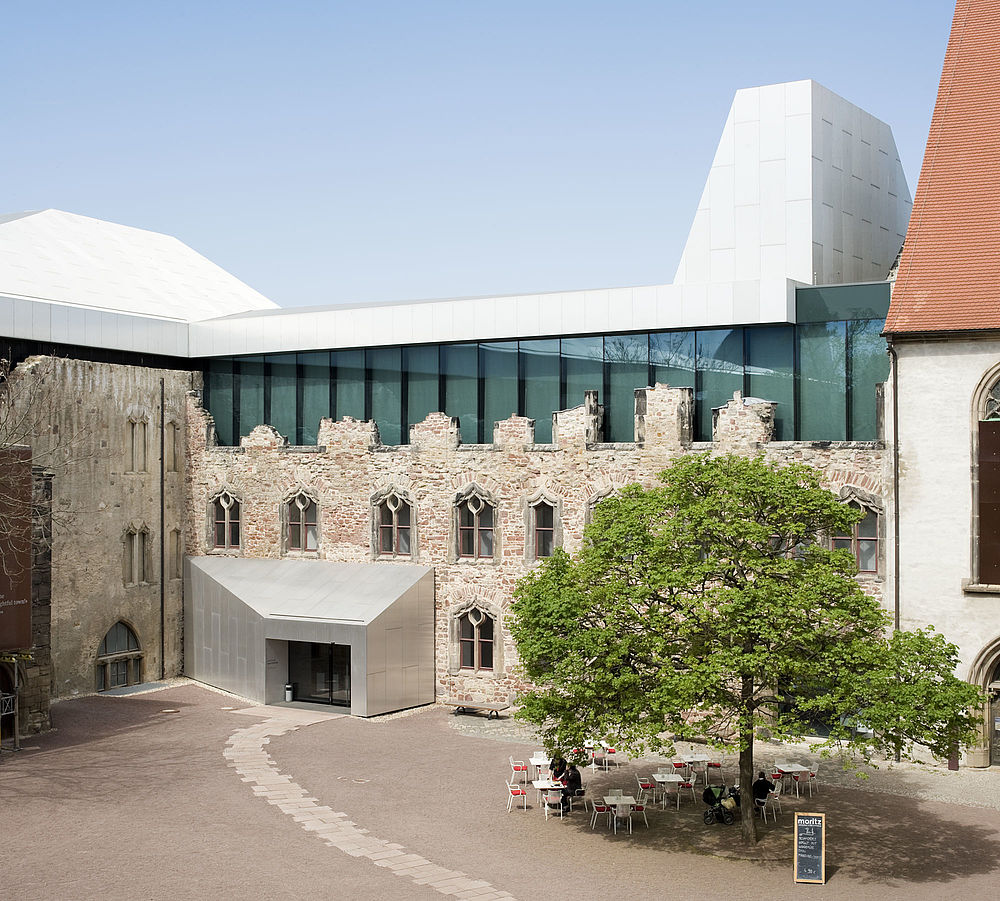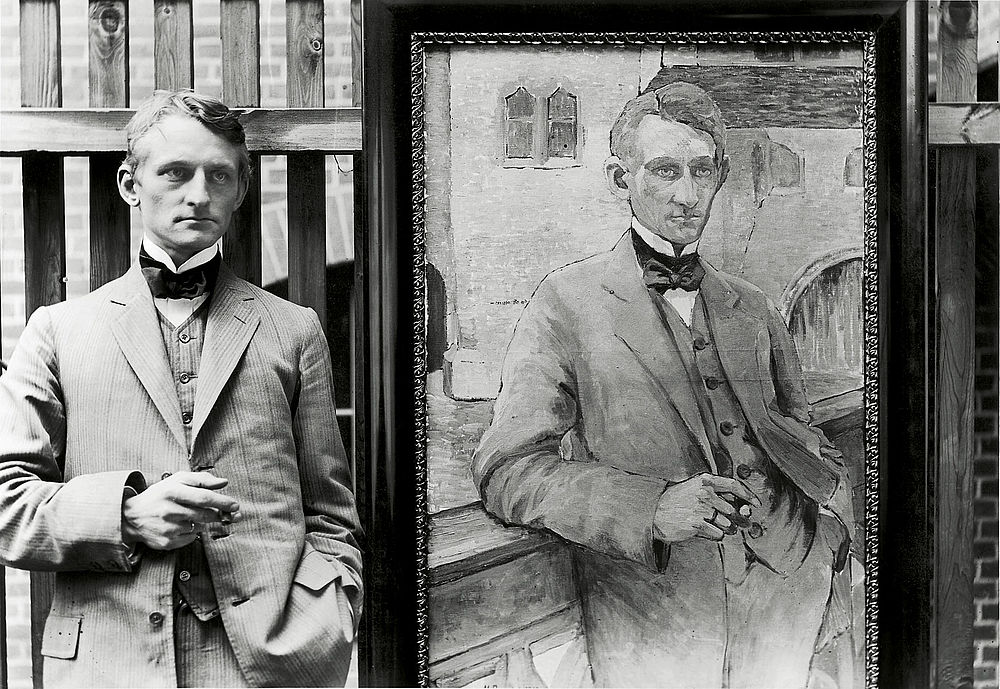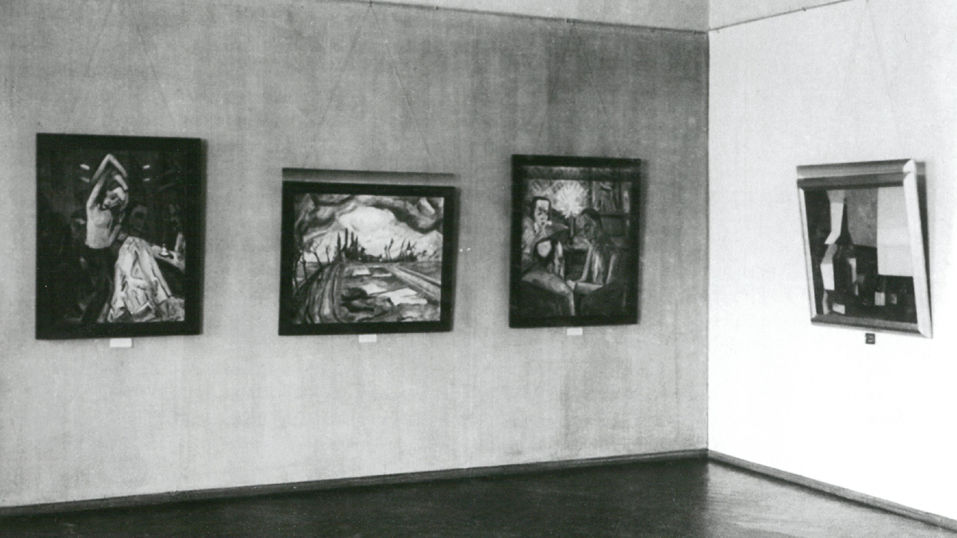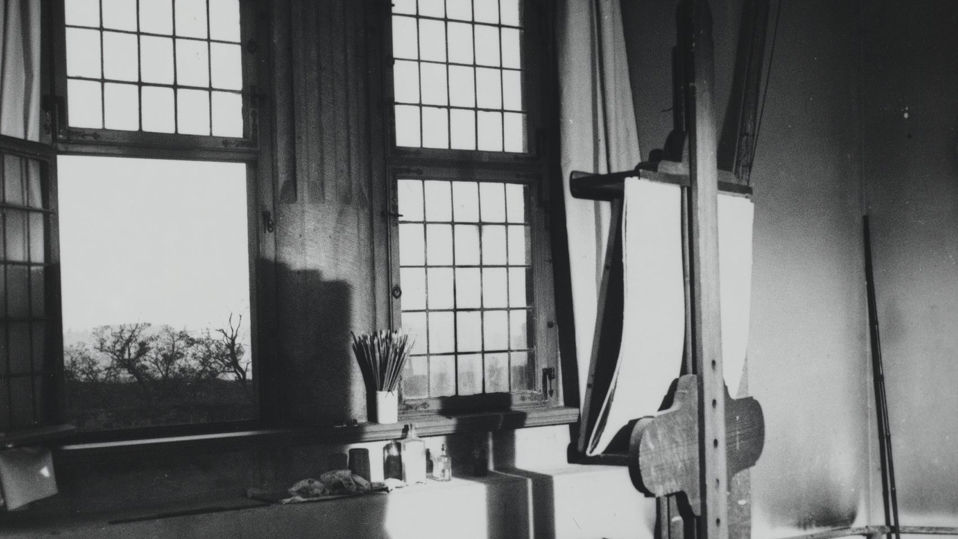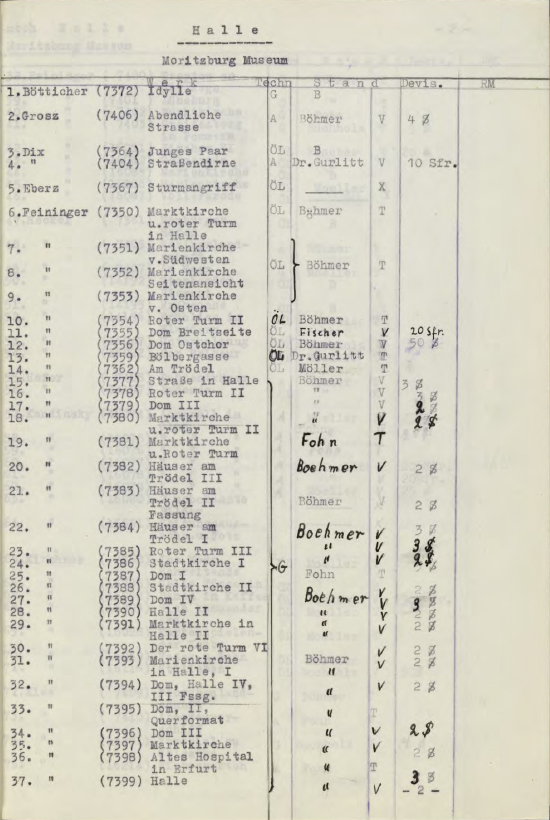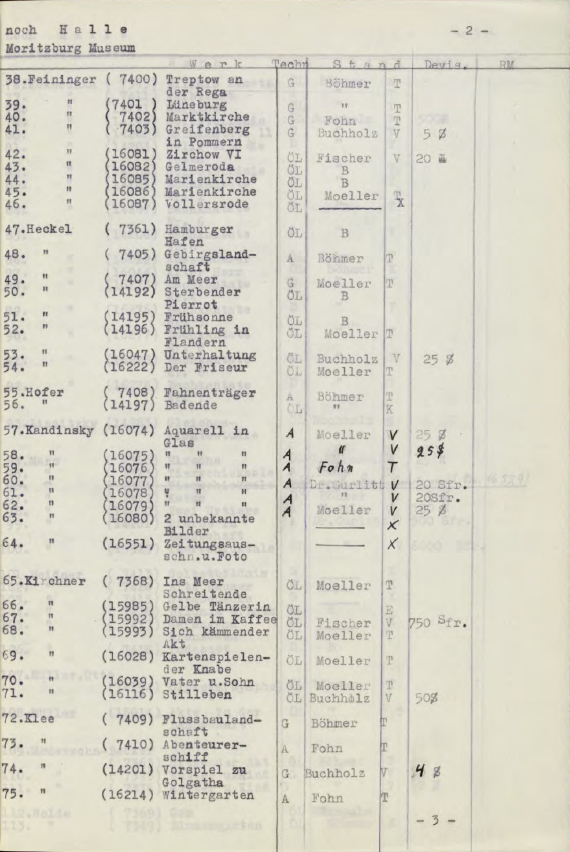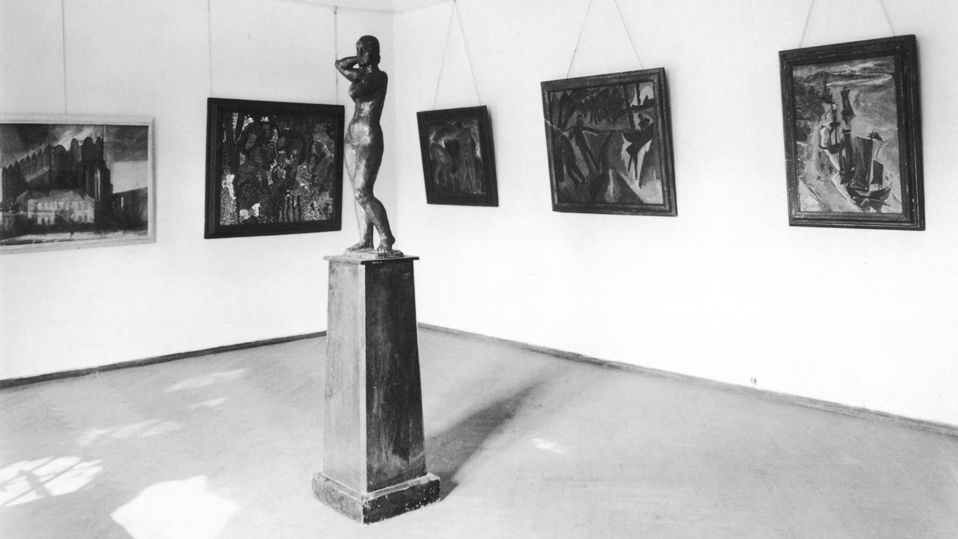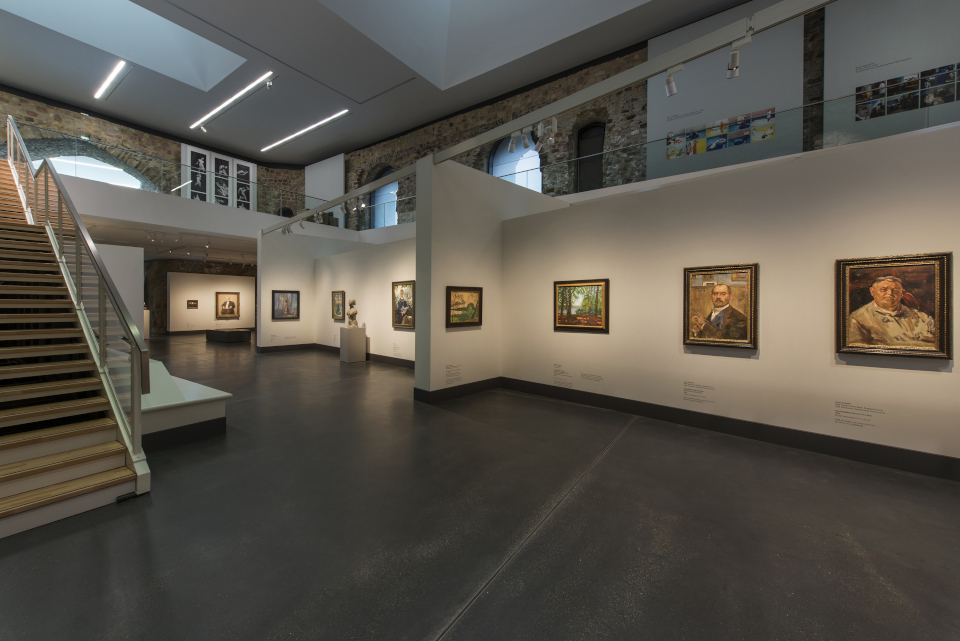The art museum
Kunstmuseum Moritzburg Halle (Saale) belongs to the federal state of Saxony-Anhalt. It was founded in 1885 as the city of Halle an der Saale’s museum of arts and crafts.
Half a century earlier, in 1834, an association of art-aware citizens had been established within the intellectual orbit of the University of Halle-Wittenberg: the Hallescher Kunstverein. It followed Dresden (1828), Frankfurt (1829), Brunswick and Hanover (1832), and was founded at the same time as that in Halberstadt, making it one of the earliest art associations in Central Germany – coming before Magdeburg and Kassel (1835), Leipzig and Darmstadt (1837), Wiesbaden (1847), Görlitz (1855) and Chemnitz (1860).
High-calibre art in an extraordinary architectural ensemble
The holdings started out as a small lot of paintings, graphics and 19th-century handicrafts, presented at the Measurement and Regulation Office on the square of Grosser Berlin. Today, they have developed into an almost encyclopaedic collection of some 250,000 paintings, drawings, watercolours, prints, photographs, sculptures and craft and design objects, along with coins, banknotes and medals.
In the first half of the 20th century, this was one of the pioneering museums of the contemporary fine and applied art of these times – art which nowadays has become established worldwide as Classical Modernism. At present, visitors can experience more than 500 items on some 3,000 sqm in a fascinating architectural atmosphere.
A museum with a unique history
It was only in 1904, when Halle an der Saale’s municipal art museum (Städtisches Museum für Kunst und Kunstgewerbe) was moved to the historical ensemble in the revitalised ruins of Moritzburg Castle, that the museum’s history began in the location after which it is named.
From the museum's foundation to the First World War
Once the new museum rooms in the south wing of Moritzburg Castle were complete, in 1904 the museum moved into the building known as the Talamt, and its history began in the location after which it is named.
In 1908, the art historian Max Sauerlandt (1880–1934) was appointed director in Halle an der Saale. He triggered the systematic compilation and expansion of the collections. Sauerlandt recognised that he could not compete with the large collections in Berlin, Dresden or Munich, but he could turn the museum into something special by focusing on the art of the turn of the century and the present.
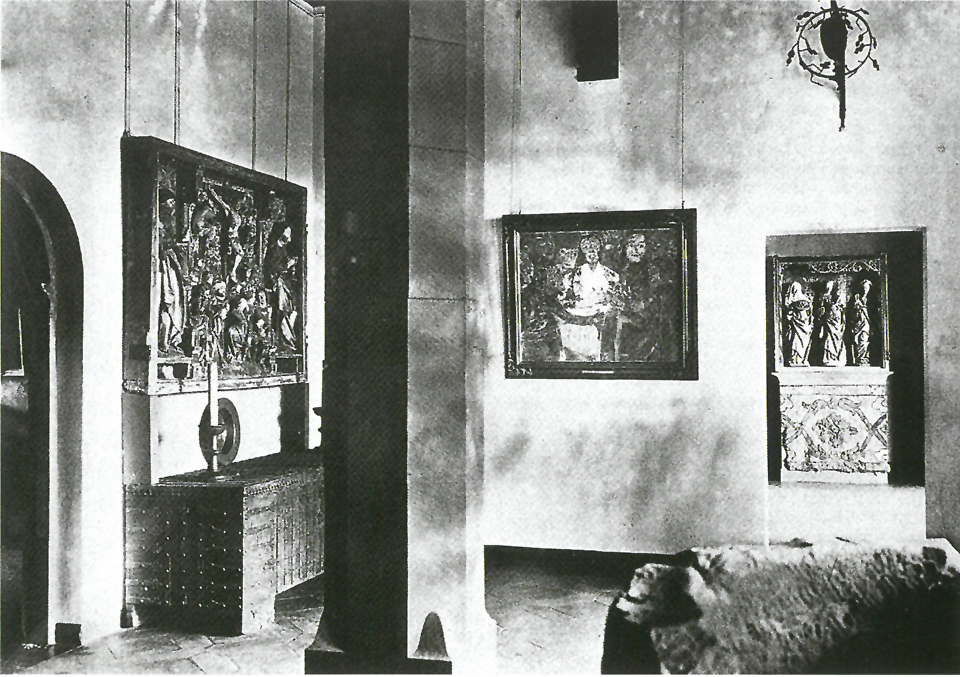
He thus set up an exhibition of the museum’s applied art and design collection in the new rooms in Moritzburg Castle which was in line with the very latest concepts on museum presentation. When it came to the visual arts, Sauerlandt faced the task of starting to build up a small collection. To this end, he began by acquiring works by artists from the Berlin Secession group from around 1900: paintings by Max Slevogt, Lovis Corinth or Max Liebermann, among others.
Interested in the art of his own times, in 1913 he bought Emil Nolde’s “The Last Supper” (1909), one of the most important works of Expressionism. By following this progressive museum policy, Sauerlandt established the Halle museum as one of the leading collections of Modernism, a subject of official disapproval by the German Empire. After the war, Sauerlandt moved back to Hamburg, taking on the position of director of the city's Museum of Arts and Crafts.
The museum in the Weimar Republic
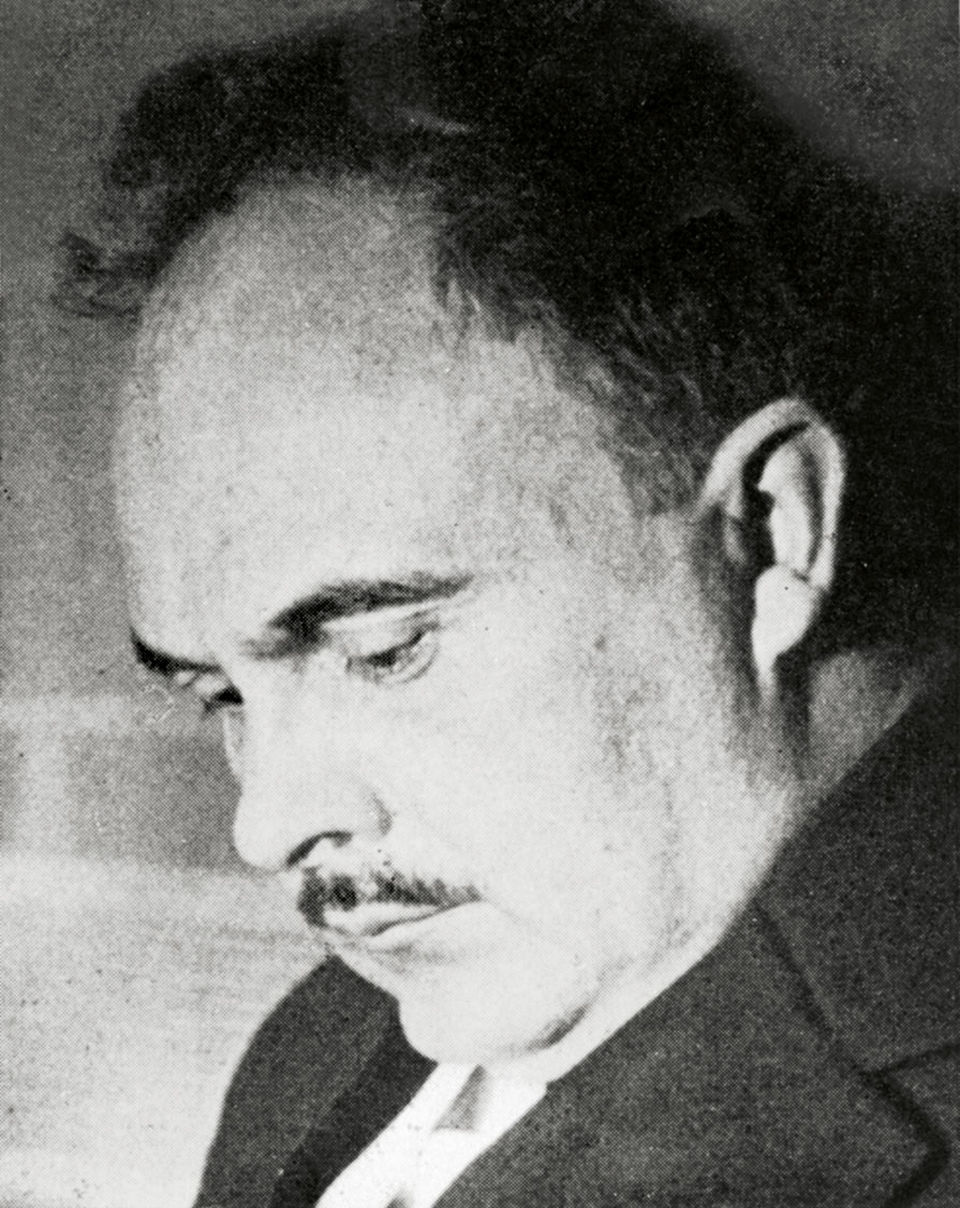
For an interim period, Paul Thiersch (1879–1928), the vice-chancellor of Burg Giebichenstein University of Art and Design, took over as the museum director before Alois J. Schardt (1889–1955) was officially appointed to the position. Under Thiersch, the collection of paintings was no longer presented on Grosser Berlin square; in 1921 it was moved to the domed hall, completed in 1917. This meant that the collections of fine and applied arts were united in the Moritzburg for the first time, on a permanent basis.
Schardt followed in Sauerlandt's tradition of focusing the collections on contemporary art, while adding important takes on abstract art, including works by El Lissitzky, Paul Klee and Wassily Kandinsky. In addition to his progressive collection policy, like his predecessors Schardt also shaped the history of the museum through an innovative presentation concept. As well as introducing artificial light and attempting to create a relatively stylistically neutral spatial setting in which to present the works, Schardt experimented with walls painted in different colours to underline the effect the works of art had on viewers.
Alois J. Schardt went even further than Sauerlandt in adding new works to the museum’s collections which emphasised their contemporaneity. It is especially worth mentioning those by Lyonel Feininger, who had a studio in the gate tower of Moritzburg Castle between 1929 and 1931, as an artist in residence. Originally assigned to paint a view of the Halle an der Saale, following intensive engagement with the town Feininger produced a cycle of eleven paintings. On their completion in 1931, the town council acquired the paintings of Halle for the museum.
The museum in National Socialist time
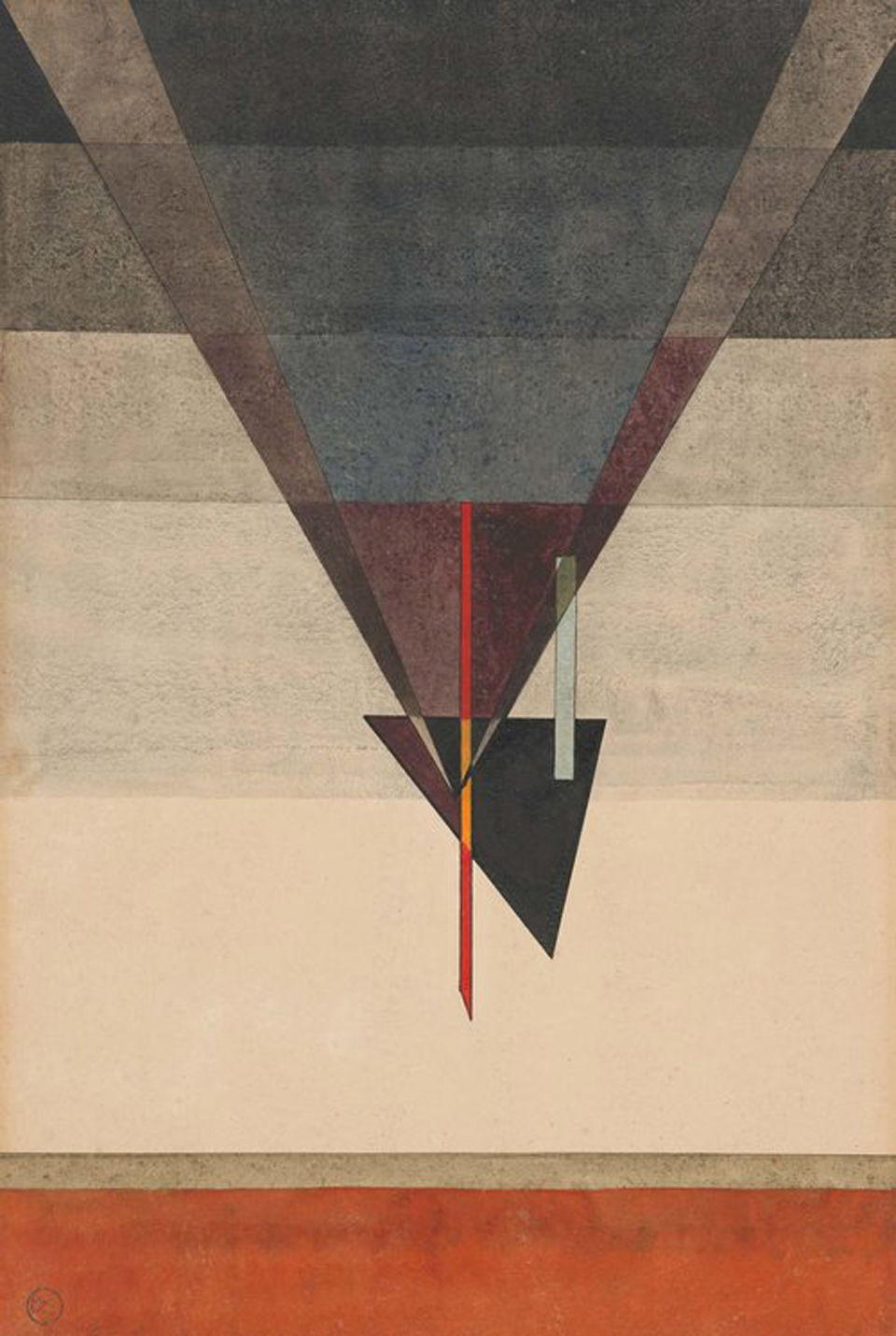
Whereas Halle’s museum of art had been one of Germany’s most modern museums until 1933, its reputation underwent a reversal after the Nazis seized power. Modernist art was now considered “degenerate” and defamed throughout Germany. The museums most seriously affected were those which had been intensively dedicated to contemporary art prior to 1933. Thousands of their holdings were looted. The “Degenerate Art” research centre in Berlin today documents more than 20,000 confiscated works.
Alois J. Schardt was sent into retirement in 1936. After another interim period during which the vice-chancellor of the Burg Giebichenstein University of Art and Design took on both organisations, in 1938 Robert Scholz (1902–1981) took over as museum director. In his hands, what was once a museum of modernist art now became one of the leading representatives of the völkisch nationalist wing of the NSDAP, with works of National Socialist art entering the collections, including works by Werner Peiner, Fritz Klimsch, Paul Mathis Padua and Karl Leipold.
In 1937 Kunstmuseum Moritzburg Halle (Saale) lost 146 works confiscated for being “degenerate”. This meant that the museum was affected less than many in terms of quantity; however, the confiscations deprived the museum of its heart: its renowned collection of modernist art. Every one of the works taken remains an irreplaceable loss to this day! The collection left in the wake of the Nazi ravages had been mutilated. Since then, 14 works have successfully been re-acquired, the latest, in March 2017, being “Abstieg” (1925), one of seven confiscated watercolours by Wassily Kandinsky.
The museum in the GDR
After the end of the Second World War, Gerhard Händler (1906–1982), the new director of the museum, faced the task of preparing for its reopening. But the museum no longer existed as it had in 1933. Very little remained of the collection’s erstwhile reputation.
In view of this, no praise can be high enough for what Gerhard Händler achieved in 1947/48. He rebuilt a new collection which explicitly saw itself as upholding the tradition of the lost holdings, and attempted to extend it with more recent, contemporary works from the 1930s and 1940s, e.g. by Alexej von Jawlensky, Ernst Wilhelm Nay or Carl Hofer. In October 1948 the museum was reopened with a presentation of the old and new collections.
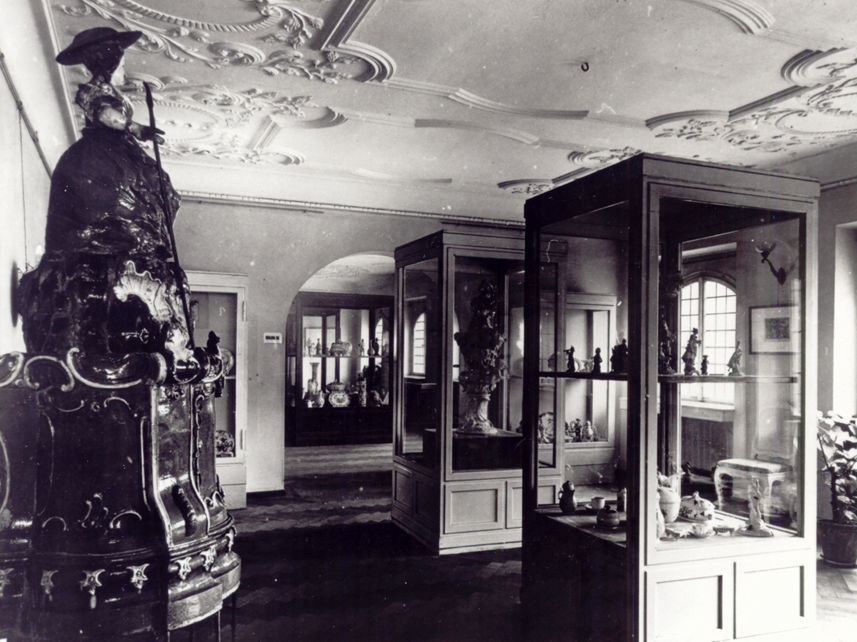
During the politico-cultural implementation of the concept of socialist realism and the related debate on formalism, modernism again immediately became the target of ostracism, and along with it Händler’s exemplary museum work. The government ordered him to “hang a sign at the entrance to the Expressionist rooms saying ‘bourgeois degenerate art and approaches to new design’”. Händler refused to bow to this pressure and left Halle an der Saale for the West.
After Händler's departure, the Halle museum was merged with other museums in Saxony-Anhalt to create a regional gallery. As a result of the administrative reform in 1952, the museum was renamed Staatliche Galerie Moritzburg. Adding to the historical profile of its collections, the Landesmünzkabinett was added and, in 1987, the Photography Collection, Despite the state regulation of the cultural sector, the museum's directors succeeded in collecting the broadest possible spectrum of contemporary art to match its profile. As a result, it remained one of the most significant museums in the GDR until 1989/1990.
The museum today
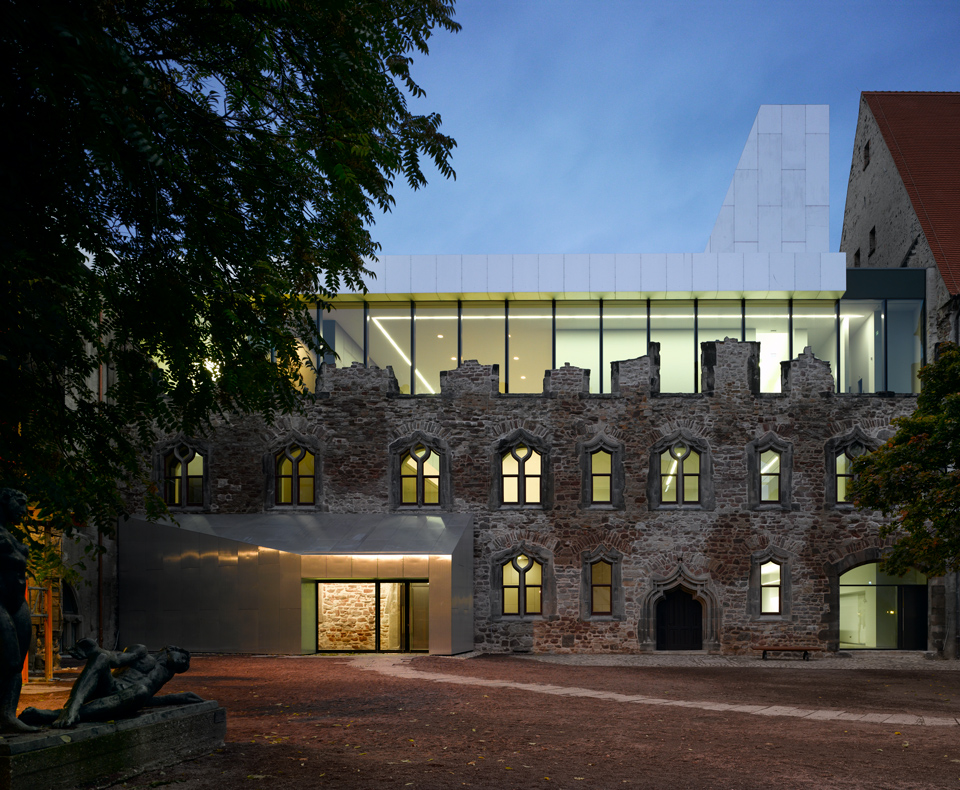
Since the peaceful revolution of 1989/90, Kunstmuseum Moritzburg Halle (Saale) has become one of the most important art museums in Germany. In 1996 after 111 years in the hands of the municipality, it was raised to the status of a regional museum, and 2003 saw the completion of its structural transformation into a foundation. Since 2014, the museum has been part of Kulturstiftung Sachsen-Anhalt, one of the country's largest foundations. Renamed Kunstmuseum Moritzburg Halle (Saale), it has furthered focused its profile as a museum of 20th century art in Germany.
In the modern exhibition halls of the extension opened in 2008, since 2017/18 the museum has presented its unique collections of visual and applied art in a modern, innovatively daring presentation with four sections reflecting German history in the 20th century: art in the German Empire, art in the Weimar Republic, art in National Socialist time and art in the Soviet occupation zone / GDR. The Halle museum is the only German art museum to use its holdings to present art in the latter two political systems.
As well as bringing its profile into sharper focus, over the last few decades the museum has also constantly expanded its collections. This has involved not only acquisitions but also numerous, often extensive gifts and permanent loans. Of these, the permanent loan of the Kracht family’s outstanding Franz Marc collection and Einar Schleef's artistic bequest deserve special mention.
Even in the 21st century, Kunstmuseum Moritzburg Halle (Saale) remains an important museum of its time, as a castle of modernism.

